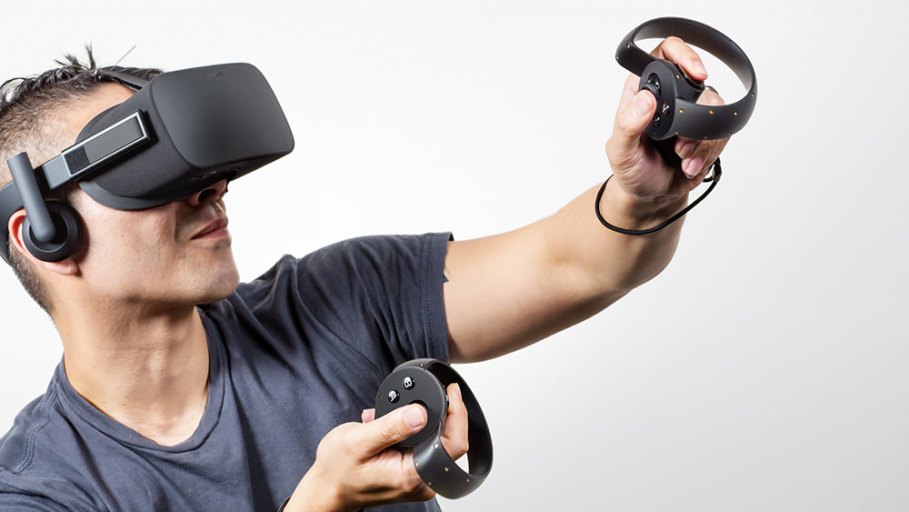This week, MEF Minute kicks of a new series, The MEF Guide To… giving you an essential primer on the technologies set to make an impact on the mobile ecosystem. This week the subject is virtual reality.
 There’s no doubt about it: virtual reality is the technology of the year. And the year is 1991.
There’s no doubt about it: virtual reality is the technology of the year. And the year is 1991.
Readers of a certain age may smile at the sudden wave of enthusiasm for VR. All the excitement about the potential of this extraordinary tech has been seen before, over 20 years ago.
Back then, the coin-op arcades began creating headsets that enveloped users inside a virtual world. Tilt your head one way and the graphics would react as if you were in the ‘real’ world. Before long, everyone wanted in. Nintendo launched its Virtual Boy while UK firm Virtuality briefly became one of the most sought-after tech brands in the world.
Unfortunately, the technology didn’t work. The graphics were poor. The experience made people nauseated. Inevitably, VR disappeared.
Of course, the fact that VR failed did not mean the end. Look at the MP3 player, the tablet computer, the smart watch. All of them survived false dawns to be re-born.
The resurrection of VR began in 2012 when a handful of engineers who recalled the promise of those early days resolved to give it another go. They formed a company, Oculus, to create a prototype headset, the Rift. The product was launched on Kickstarter and was a tremendous success, raising $2.5m. Ultimately, the firm sold 100,000 units of its second generation headset to backers.

Oculus worked hard to solve the historic flaws of VR. It managed to sharpen displays and reduce motion blur and latency to fool the eye into seeing a smoothly moving image. It also figured out spatial positioning so that users could lean in, peak round corners and so on.
VCs invested $91m into Oculus. Then, in 2014, Facebook bought the business for $2bn. The first consumer version of the Rift will ship in Q1 2016.
$2bn is a huge sum, but Facebook and its CEO Mark Zuckerberg clearly believe VR represents more than just a better way to enjoy video games. Rather, it can be the next big thing in user interfaces: the future of TV, cinema, shopping, business communication, education.
Mark Zuckerberg said in an earnings call: “VR needs to reach a very large scale – 50 million to 100 million units – before it will really be a meaningful thing as a computing platform.”
Many market analysts think the market is on the right track. CCS Insight believes more than 12 million virtual reality headsets will be sold in 2017, with sales of augmented reality smart glasses expected to be worth $1.2 billion in the same year. Meanwhile, Sophic Capital estimates that by 2018 the virtual reality market could reach $7 billion, with $2.3 billion coming from VR hardware and $4.7 billion from software.
Inevitably, the rise of Oculus and the immense potential of the tech has brought a stream of competitors into the space. They include:
 Playstation VR – Formerly code-named Project Morpheus, this is a gaming-led device. It connects to a PlayStation 4, which processes the games and streams them to the device. It will launch in 2016.
Playstation VR – Formerly code-named Project Morpheus, this is a gaming-led device. It connects to a PlayStation 4, which processes the games and streams them to the device. It will launch in 2016.- HTC Vive – Visitors to Mobile World Congress 2015 were stunned HTC revealed a headset built jointly with games giant Valve. Reviewers have almost universally proclaimed the Vive as the best VR headset yet. HTC/Valve seem to have solved the spatial positioning element better than their competitors. The release date should be next year.
- Samsung Gear VR – Samsung moved quickly into the VR space by creating a headset that consisted of a Note phablet snapped inside eye goggles. The software is powered by Oculus. To create the illusion of virtual reality the Note 4 display divides into two screens, one for each eye. Samsung has focused mostly on games, which are available from the Gear store.
- Google Cardboard – VR doesn’t need to be expensive. In 2014, Google launched Cardboard, a kit for creating your own headset made from cardboard. It fits over an Android phone screen and works with any software that’s been made with the Cardboard SDK. You can buy one for under $5.
 Alongside the above, there are many more options such as the Carl Zeiss VR One and the Microsoft Hololens(strictly speaking an augmented reality device, rather than a virtual reality one). In fact, there are well over 150 companies already selling VR headsets on Amazon.
Alongside the above, there are many more options such as the Carl Zeiss VR One and the Microsoft Hololens(strictly speaking an augmented reality device, rather than a virtual reality one). In fact, there are well over 150 companies already selling VR headsets on Amazon.
Of course, VR is also of great interest to the mobile industry. Clearly, it can become another selling point for handset makers (witness the Samsung Gear, above), but it is also interesting software developers too.
In March, YouTube unveiled 360 videos. Users can view them via the YouTube app on an Android device simply by moving the phone. And just days ago, rumours emerged that Facebook is working on a mobile app that that will support similarly ‘spherical’ videos.
Although VR is available now, it looks like 2016 will be the real springboard for the technology. This is when the flagship devices will hit, and it will also mark the appearance of landmark software concepts.

The most eagerly awaited of these may be Henry, the first movie to be released by Oculus Story Studio – an internal team developing ideas around virtual reality in film.
Some say Henry could be a moment in cinema to rank with the Lumiere brothers screening an oncoming train or the debut of the first talkie. But is it possible to tell a story if the viewer can movie around inside the action? And how can a director choose a point of view in such circumstances?
These are big creative questions to rank alongside VR’s technological ones. But there are other challenges. In August, Time ran a headline on its cover: ‘The Surprising Joy Of Virtual Reality’. Accompanying it was an unflattering picture of Oculus’s founder Palmer Luckey.
The image was a reminder that it’s almost impossible to promote VR in a way that makes it look cool. The fact is, it’s only fun for the participant, never for the onlooker. Whether this will stop people checking it out remains to be seen.




